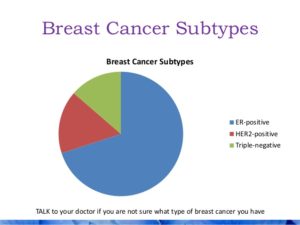- You are here:
- Home »
- Blog »
- non-conventional therapies »
- ER Positive Breast Cancer Survivors Risk Lingers for Decades- Reduce Your Risks Through Non-Toxic Therapies
ER Positive Breast Cancer Survivors Risk Lingers for Decades- Reduce Your Risks Through Non-Toxic Therapies

“If women (with breast cancer) have a clearer picture of their future odds of recurrence, he said, that could help them decide whether the treatment is worth the downsides.”
The reason for writing this post is not to encourage or discourage women with breast cancer to have more aromatase inhibitors therapy than the normal five year dose. The reason for writing this post is for two reasons:
- To educate women about the risk of side effects during those extra aromatase-inhibitor years and
- Educate women about the numerous evidence-based, non-toxic therapies that have been shown to reduce the risk of breast cancer
The article linked below is clear when it spells out the fact that “Studies have shown that longer treatment (of aromatse-inhibitors) further cuts the risk for recurrence.” This much we know.
But what the article below doesn’t discuss are evidence-based non-toxic therapies that reduce the risk of BC. Frequent moderate exercise, curcumin, cruciferous vegitables, and many, many more non-conventional therapies that many not entail the life changing side effects cited in the article below.
I am both a cancer survivor and cancer coach. I have lived in complete remission from my “incurable” cancer since early 1999 and swear by my evidence-based, non-toxic lifestyle which includes exercise, curcumin and cruciferous veggies.
Please scroll down the page, post a question or comment and I will reply to you ASAP.
Thank you,
David Emerson
- Cancer Survivor
- Cancer Coach
- Director PeopleBeatingCancer
Risk of Breast Cancer’s Return Can Linger for Decades
“Women treated for early stage breast cancer still face a substantial risk of recurrence up to 20 years later, a large, new study shows…
Specifically, the researchers followed women with estrogen-receptor-positive breast cancer, which means the hormone helps fuel the cancer’s growth. Standard treatment includes hormonal therapy — with drugs that block estrogen’s effects — to help prevent a return of the cancer.
Researchers found that while the women remained cancer-free for those five years, the risk for recurrence over the next 15 years was still significant.
It was greatest for women whose initial cancer had spread to multiple lymph nodes near the breast by the time it was diagnosed. Their odds of eventually having a distant recurrence — meaning the cancer spread to such tissue as the bones, liver or lungs — were as high as 41 percent…
Still, he said, the findings give doctors and women more information for making treatment decisions.
That’s because women can opt for more than five years of hormonal therapy. Studies have shown that longer treatment further cuts the risk for recurrence.
However, that can also mean additional years of side effects — like hot flashes, sexual dysfunction and joint pain, Hayes said. If women have a clearer picture of their future odds of recurrence, he said, that could help them decide whether the treatment is worth the downsides.
Chemoprevention of Breast Cancer With Vitamins and Micronutrients: A Concise Review
Numerous dietary components and vitamins have been found to inhibit the molecular events and signalling pathways associated with various stages of breast cancer development. To identify the vitamins and dietary micronutrients that exert protective effects against breast cancer and define their mechanism of action, we performed a literature review of in vitro, animal and epidemiological studies and selected the in vitro and animal studies with robust molecular evidence and the epidemiological studies reporting statistically significant inverse associations for a breast cancer-specific protective effect.
There is sufficient evidence from in vitro, animal and epidemiological human studies that certain vitamins, such as:
- vitamin D3,
- folate,
- vitamin B6,
- and beta carotene
as well as dietary micronutrients, such as
- curcumin,
- piperine,
- sulforaphane,
- indole-3-carbinol,
- quercetin,
- epigallocatechin gallate (EGCG)
- and omega-3 polyunsaturated fatty acids (PUFAs),
display an antitumoral activity against breast cancer and have the potential to offer a natural strategy for breast cancer chemoprevention and reduce the risk of breast cancer recurrence. Therefore, a supplement that contains these micronutrients, using the safest form and dosage should be investigated in future breast cancer chemoprevention studies and as part of standard breast cancer therapy.


